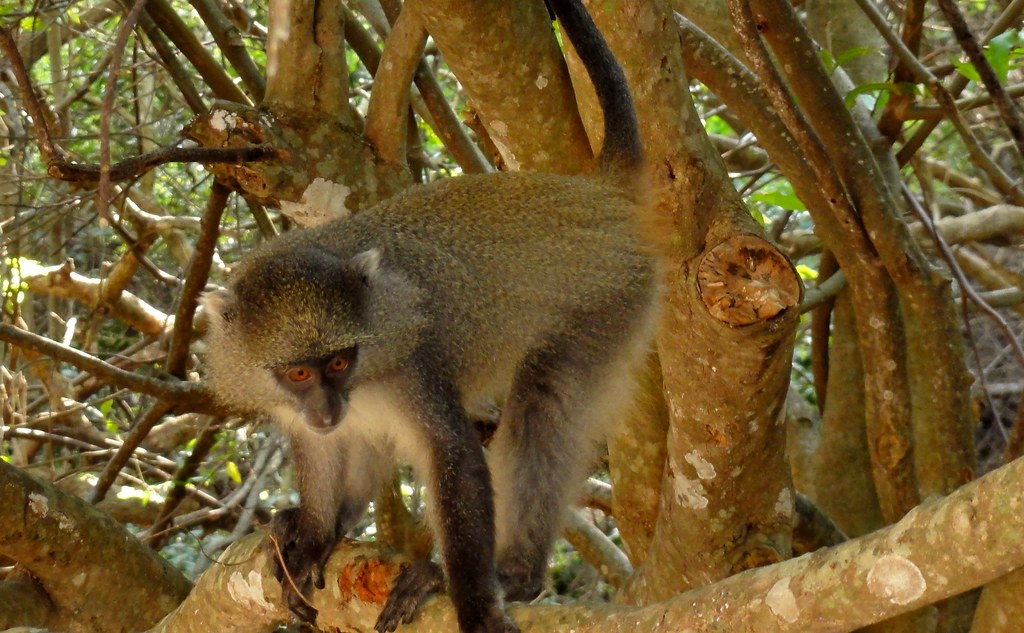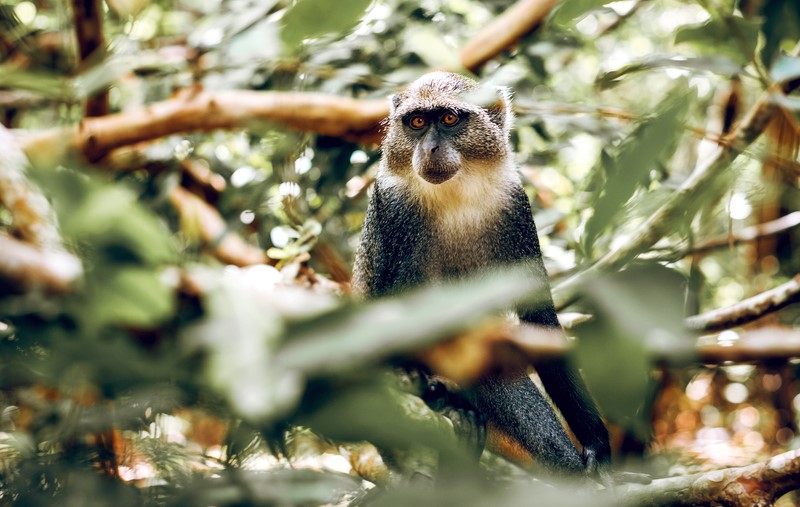If you are in the Oribi Gorge Nature Reserve (Route 3) or the Umtamvuna Nature Reserve (Route 9) you’re in the right place to catch a glimpse of the samango monkey that is the inspiration for the Southern Explorer Association’s mascot.
About 25 per cent larger than the vervet monkey, the samango (insimango in isiZulu) has a grey face, black arms, grey, shaggy body fur and a whitish ‘collar’. The males lack the striking blue colouring of the scrotum that is so noticeable on the vervet.
There are three subspecies of samango monkeys (known further north as Sykes’ or blue monkeys). Those you will see here, Cercopithecus albogularis labiatus, are the southernmost type and found almost exclusively in the two South Coast reserves.
With tails about 30 per cent longer than their bodies to assist their balance, they are incredibly agile when climbing and leaping between trees. They spend most of their time in the forest canopy and, though they do forage on the ground from time to time, they never stray far from the trees.
Agricultural and urban expansion in recent years has resulted in forests in some areas becoming not much more than scattered patches of trees, with no connecting corridors between them, isolating the monkey colonies from one another and limiting their range. A 2016 report warned that isolated samango populations were at risk of local extinction, though the South Coast’s colonies are safely settled in protected areas.
Samango monkeys are active during the day and spend the night high up in the canopy of large trees. They spend most of the daylight hours foraging and feeding but they also engage in social activities such as grooming and playing.

Their preferred diet is fruit, for which they forage in the indigenous forest. They have also been seen to feed on leaves, flowers, bark, gums, fungi, seeds, insects and other animal matter. When foraging in the trees, samango monkeys sometimes drop fruit, making it available to terrestrial animals such as bush pig, duiker and porcupine.
A monkey troop consists of a number of females and their younger offspring, led by one dominant male. Male youngsters are evicted from their family groups before reaching maturity and frequently band together until they are ready to challenge a resident male for breeding rights with his group of females. These fights can be pretty vicious and it‘s unusual for a male to retain dominance for more than two or three years.
Group sizes vary considerably, as do the sizes of the territories they claim. While the males fight for dominance, the females are aggressive in defence of their territories. They reach sexual maturity at around seven years and breed every two or three years thereafter.
Samango monkeys use a variety of sounds to communicate. The ‘boom’ call, which the male emits, most frequently at dusk and dawn, is a low-pitched call that carries far in the forest canopy. It is thought to be a warning to intruders. Two other calls have been described a predator alarms and it would seem that one is used to warn of a leopard in the vicinity, while the other alerts the group to the possibility of an attack from the air. Samango monkeys also produce a variety of squeals, whistles, screams and screeches.
Their main predators are leopards, the larger eagles, rock pythons and caracals. Venomous snakes such as black mambas, spitting cobras and puff adders have also been known to kill samango monkeys, but not often.
Man is also not kind to the samango monkey. Apart from habitat loss through deforestation, the illegal trade in skins and carcasses has also taken its toll. Researchers in other areas have received requests for samango skulls and hands from traditional healers, suggesting that they are used in traditional medicine. The Red List of Mammals of South Africa, Swaziland and Lesotho lists C. a. labiatus as vulnerable, as does the IUCN (International Union for Conservation of Nature) Red List. However, on the South Coast, we are fortunate to have safe, protected indigenous forest areas where our samango friends can live their lives as Nature intended.
Welcome to their world. Enjoy their company. But DON’T FEED THEM!
Information from [https://www.sanbi.org/animal-of-the-week/samango-monkey/]

